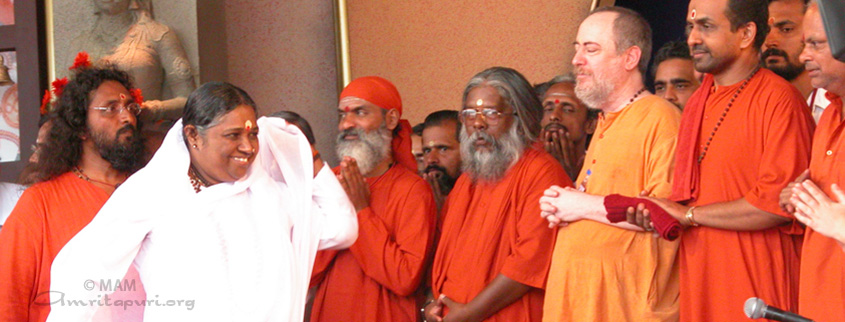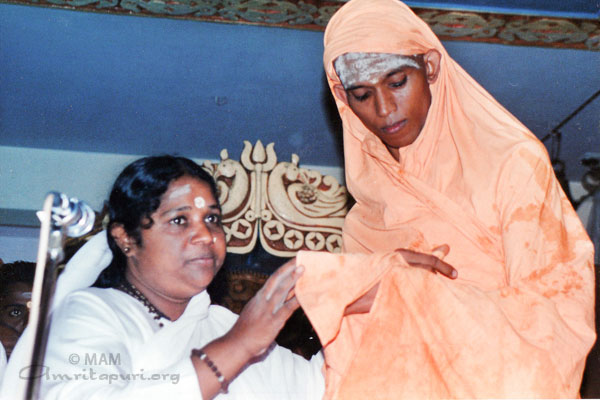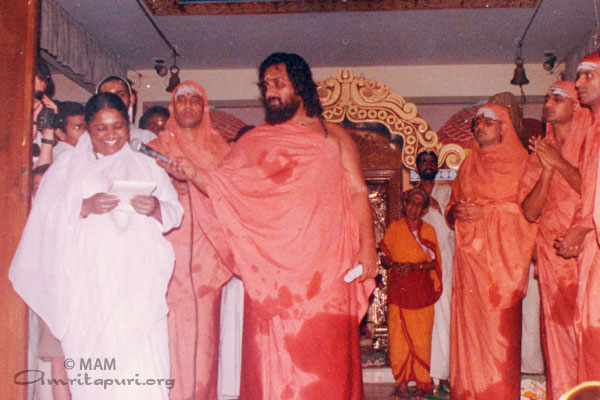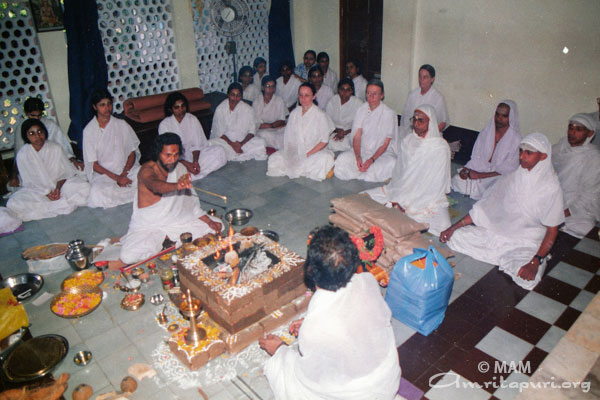What is Sannyasa?
The literal meaning of the Sanskrit word “Sannyasa” is – complete (or perfect) renunciation. Thus a Sannyasi is a person who has renounced all selfish desires and works for the benefit of the world. The aim of Sannyasa is “आत्मनो मोक्षार्थम् जगत् हिताय च ||” (Atmano mokshartham, jagat hitaya cha) which means “for the liberation of the individual and for the good of the world.” The term Sannyasi is applicable to both men and women. Generally, a male Sannyasi is referred to as “Swami” and a female Sannyasi is referred to as “Swamini”.
Even though she doesn’t fall under any tradition of Sannyasis or taken up Sannyasa, Amma has been initiating her disciples into Sannyasa since 1982. She respects all traditions. Following the traditions set up by Adi Shankaracharya {read} her disciple was initiated into Sannyasa via Swami Dhruvananda, a monk of Sri Ramakrishna Math, who has taken Sannayasa from the Puri order of Shankara Parampara.
The new names of the Swamis are suffixed with Anand (bliss) and Puri (the Sannyasa order). Swaminis are suffixed with Prana (life breath). The ochre colour of the new robes indicates the flame of renunciation, which the Swamis are supposed to live.
The Sannyasa ceremony involves fasting, shaving head and a series of ritual steps which symbolize the cutting of all relations and the final performance of all the obligatory duties of an individual. They also conduct their own funeral rites. After the Viraja Homa in the Brahma muhurta, Amma gives Sannyasa Deeksha.
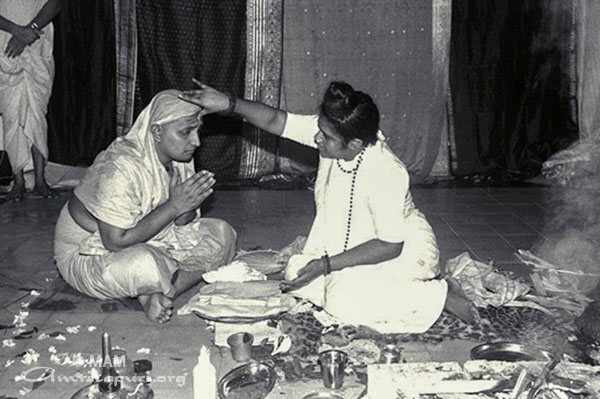
First Sannyasi
In October 1989, in a solemn atmosphere of devotion and joy, amidst the chanting of Vedic mantras and puja, Balu who came to Mother in 1979 and later became Brahmachari Amritatma Chaitanya, was ceremoniously initiated in Sannyasa by Amma. Mother gave him the name of Swami Amrita Swarupananda Puri. Since then Amma has initiated many Brahmacharis into Sannyasa. {news}
What Amma says about Sannyas
“Even a Sannyasi’s breath should be for the good of others. It is said that he should not even breathe for his own comfort. The whole body has been sacrificed in the fire of Knowledge. The Ochre cloth symbolizes the colour of fire. Now he is of the nature of the Self.
“A Sannyasi should worship everyone seeing them as Devi or the form of God. It is through human beings that God should be served.
“The Sannyasi doesn’t have a particular God. He should serve the people seeing them as God. His remaining life is to serve them.
“A Sannyasi should live dedicating his life who are verily the forms of God. There is no tapas or realisation higher than that. He should serve everyone seeing them as God.
“His duty towards God is compassion towards the poor and needy. Other than that, however much penance you do, there is no benefit.
“Permission to enter a country cannot be gained without a passport. Without the passport of Service, you will not get a visa of Realisation.
“For a genuine Sannyasi, the whole world is a garden and each individual is a flower therein. Such a person belongs to the whole world and has no particular caste, creed, sect or religion. Everyone has equal rights to the Sannyasi. Everyone is equal in his eyes.
“A Sannyasi is a real servant of the world. In fact, he or she is the only one who serves and loves the world without expecting anything in return.
Brahmacharya Deeksha
Initiation Ceremony for a Brahmachari
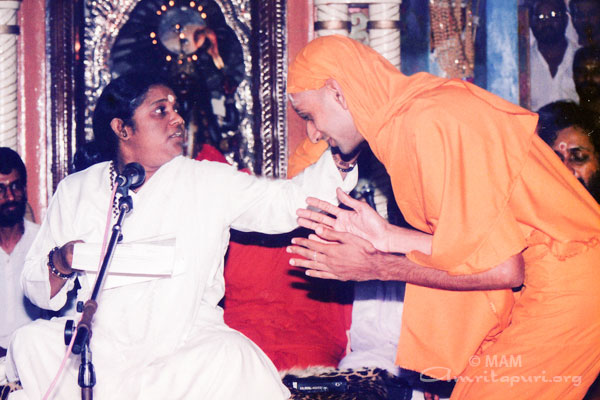
After a few years of stay in the ashram, some of the residents are given formal initiation into Brahmacharya. This involves donning of yellow robes and accepting new names.
The new names of the Brahmacharis are suffixed with Chaitanya (consciousness). The yellow colour of the new robes indicates the beginning of the flame of renunciation, which the brahmacharis are supposed to nurture and nourish.
The Brahmacharya Initiation ceremony involves fasting, shaving one’s head except for a tuft of hair (by the male brahmacharis), the performance of a Ganapati Homa, accepting and donning yellow robes and the sacred thread and also receiving a new name.
After a day of fasting, in accordance with the ancient tradition of renunciates, the newly initiated brahmacharis go and take alms from devotees and cook their first meal.
After receiving formal initiation into Brahmacharya, many of the brahmacharis serve Amma in various branch ashrams or by going on tours to various parts of India and the world. Thus they spread Amma’s message of Love and Compassion. Some of them are put in charge of the various institutions run by the Math.
These brahmacharis provide a means for devotees, living away from Amma, to stay in touch with Her, the ashram and spiritual life.

